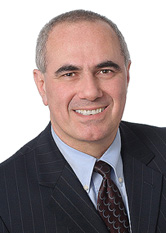Leaving LIBOR: June 21 Market Update
It’s not easy to move an estimated $200 trillion market away from an established reference rate and have it coalesce around another. Progress will undoubtedly be halting and uneven, as lenders try to align themselves with the market. The purpose of this update is to help lenders make educated decisions during that process by highlighting market trends and developments for their consideration.
1. Term SOFR May Be Available by Early August.
On June 8th, the Interest Rate Benchmark Reform Subcommittee of the Market Risk advisory Committee (MRAC) of the Commodity Futures Trading Commission recommended that starting July 26, 2021, interdealer brokers replace trading of USD LIBOR linear interest rate swaps with trading of SOFR linear swaps, a market best practice referred to as “SOFR First”. Although the recommendation does not impact availability of LIBOR linear swaps in dealer-to-client transactions, it is expected to cause trading activity among swap dealers, which account for a large share of trading in the interest rate swap markets, to switch from LIBOR to SOFR, substantially increasing SOFR liquidity in the derivatives market.
Continued growth in overnight SOFR-linked derivatives volumes, visible progress to deepen SOFR derivatives liquidity, and visible growth in offerings of cash products linked to averages of SOFR were the three market indicators identified by the Alternative Reference Rates Committee (ARRC) in its May 6th announcement. The ARRC welcomed the SOFR First announcement on the day it was issued, stating that increasing the volume of transactions quoted in SOFR will “fulfill the final market indicator for the implementation of a term rate for SOFR. As a result, term SOFR will be available upon implementation of the change in quoting conventions, removing the last obstacle to using SOFR as a replacement reference rate.” Shortly after the MRAC Subcommittee announcement, the Chairman of the ARRC stated that “[i]f we can deliver on SOFR First… the ARRC will be well positioned in days, not weeks, following that July 26 date to endorse CME term SOFR.”
2. Regulators Really Don’t Like Credit Sensitive Rates (CSR).
A number of regulators weighed in at the Financial Stability Oversight Council (FSOC) meeting on June 11th, all of them favoring SOFR over CSR.
- SEC Chairman Gary Gensler was particularly critical of the Bloomberg Short-Term Bank Yield Index (BSBY) which is based on unsecured bank to bank lending and, according to him, is often based on lending between a relatively small number of banks and is underpinned primarily by trades of commercial paper and certificates of deposit in some cases issued by just 34 banks. ”Like with Libor, we’re seeing a modest market shouldering the weight of hundreds of trillions of dollars in transactions,” he said. “When a benchmark is mismatched like that, there’s a heck of an economic incentive to manipulate it.”
- While acknowledging that lenders were free to choose their rates, FRB Vice Chairman Randy Quarles emphasized that market participants should not expects rates other than SOFR to be widely available in capital markets and derivatives transactions and that if they choose a reference rate other than SOFR they should do so with a full understanding of how their chosen reference rate is constructed, be aware of any fragility associated with that rate and the markets that underlie it and use strong fallback provisions should their chosen rate be unavailable in the future for any reason.
- Treasury Secretary Janet L. Yellen expressed support for SOFR, saying that it “provides a robust rate, suitable for use in most products, with underlying transaction volumes that are unmatched by other LIBOR alternatives” and expressed concern that market participants may replicate some of LIBOR’s shortcomings by choosing alternative rates that lack sufficient underlying transaction volumes, “where the volume of derivatives contracts referencing these alternative reference rates could quickly outnumber the transaction volumes underlying the reference rate and would leave it vulnerable to manipulation and disruption”.
3. Commercial Lenders Are Lagging Behind in the Transition Process.
The regulators have expressed serious concerns about the lack of attention given by commercial lenders to the transition away from LIBOR.
- “While important progress is being made in some segments of the market, other segments, including business loans, are well behind where they should be at this stage in the transition” – Treasury Secretary Janet L. Yellen at the June 11th FOSC Meeting.
- “Despite the clear and unalterable intention of the panel banks to stop participating in the production of LIBOR, some market participants seem to believe that the remorseless evolution of the universe will somehow not involve them. Others have adopted a posture of strategic procrastination, watching as others take the necessary steps to prepare for the imminent end of LIBOR. The deniers and the laggards are engaging in magical thinking. LIBOR is over.” – FRB Vice Chairman Randy Quarles at the June 11th FOSC Meeting.
In light of the statement made by the three Federal banking regulators in the interagency statement issued last November (“New contracts entered into before December 31, 2021 should either utilize a reference rate other than LIBOR or have robust fallback language that includes a clearly defined alternative reference rate after LIBOR's discontinuation”) we’ve strongly urged our banking clients to update their document templates to identify a LIBOR alternative either as a first pricing option or as a fallback.
|
We will continue to monitor developments and provide |
